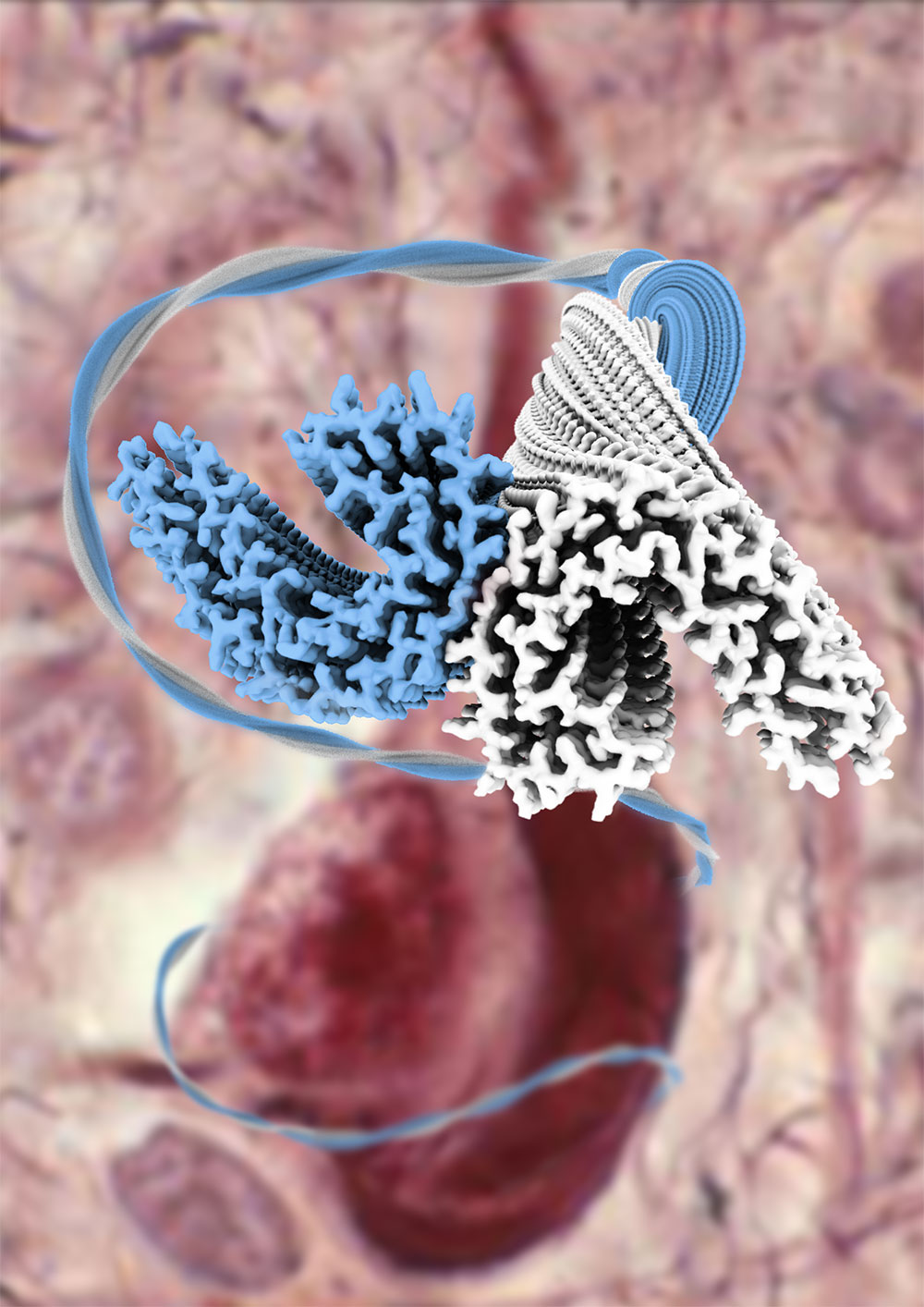News Archive
RESEARCH HIGHLIGHT - Cryo-EM structures of tau filaments from Alzheimer's disease
Alzheimer’s disease is defined by abundant plaques and tangles in cerebral cortex. Tangles are made of abnormal amyloid filaments of post-translationally modified microtubule-associated protein tau. Paired helical filaments (PHFs) were first identified in Alzheimer’s disease brain in 1963. The less abundant straight filaments (SFs) were described later. Between 1985 and 1992, PHFs and SFs were shown to be made of all six human brain tau isoforms. It was suggested that the microtubule-binding repeats of tau form the filament core, with the remainder forming the fuzzy coat. Until the recent resolution revolution in electron cryo-microscopy (cryo-EM), it was not possible to obtain high-resolution structures of non-amplified tau filaments from brain.
Read moreIMPRIND partners just published cryo-EM structure of tau filaments at Nature.

IMPRIND partners Anthony Fitzpatrick and Michel Goedert just published cryo-EM structure of tau filaments at Nature. Alzheimer’s disease, the most common neurodegenerative disease, is characterised by the formation of filamentous Tau protein inside nerve cells and amyloid-beta peptides outside cells. Despite more than three decades of research into Tau filaments from a range of different neurodegenerative diseases, atomic structures were still lacking. Now, research by the groups of Sjors Scheres in the LMB’s Structural Studies Division and Michel Goedert, in the Neurobiology Division, in collaboration with Bernardino Ghetti at the Indiana University School of Medicine, has for the first time revealed the atomic structures of Tau filaments.
Tau filament structures, rendered in blue and white. In the background, a photomicrograph of a Bodian silver-stain preparation shows a neuron from the cerebral cortex of an individual affected by Alzheimer disease. The cytoplasm around the nucleus contains a flame-shaped neurofibrillary tangle. The Tau filaments appear to wrap around the neuron.
This project receives funding from the Innovative Medicines Initiative 2 Joint Undertaking (www.imi.europa.eu) under grant agreement No 116060. This Joint Undertaking receives support from the European Union’s Horizon 2020 research and innovation programme and EFPIA.
This work is supported by the Swiss State Secretariat for Education‚ Research and Innovation (SERI) under contract number 17.00038.
The opinions expressed and arguments employed herein do not necessarily reflect the official views of these funding bodies.



